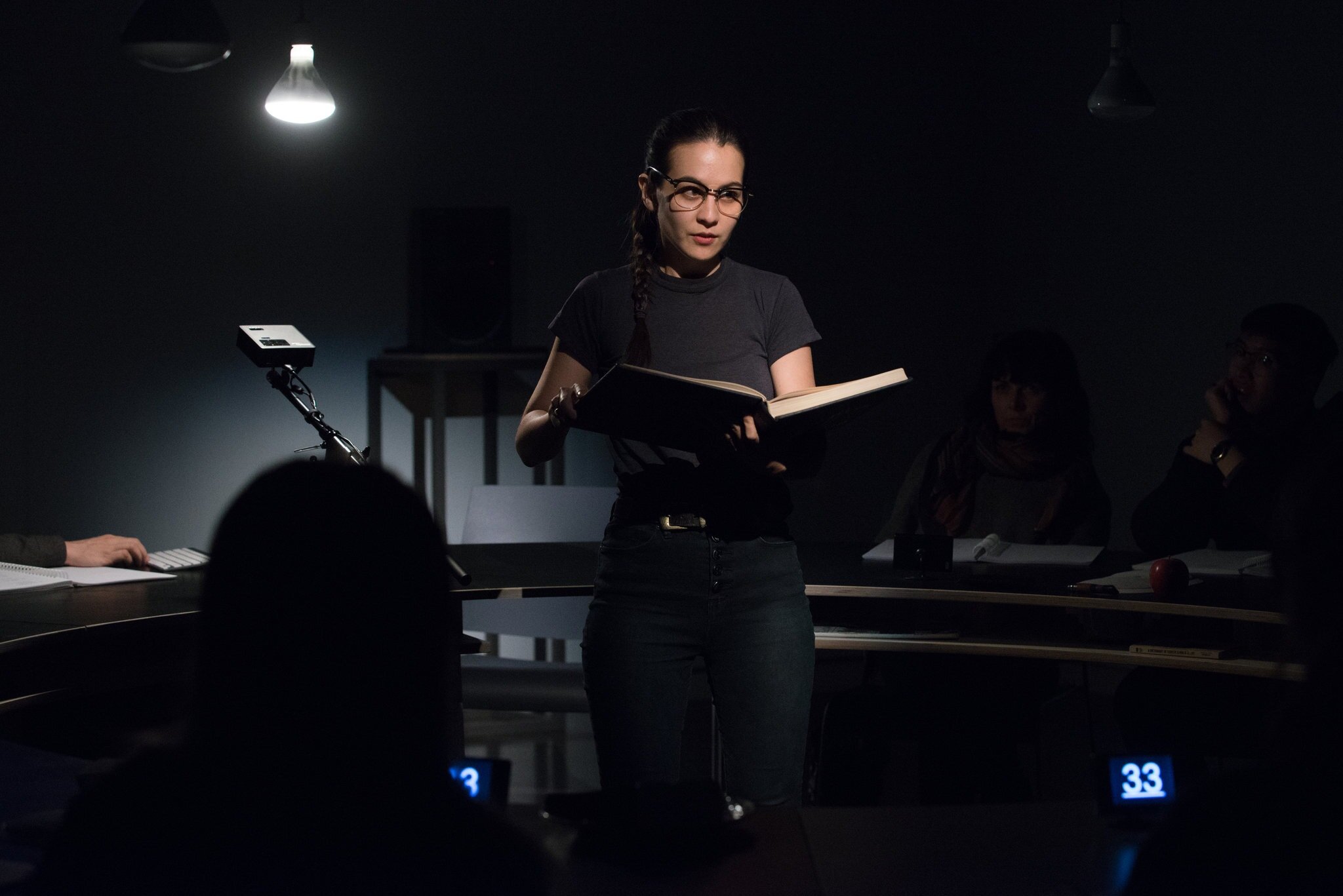‘Say Something Bunny!’ Re-Animates a Family's Mysteries
Originally published on The Culture Trip
View this story online
Alison S. M. Kobayashi
The everyday becomes enthralling in Say Something Bunny!, a surprising new show that discovers compelling mysteries where the most intrepid sleuths wouldn’t expect to find them. Created by husband-and-wife team Alison S. M. Kobayashi and Christopher Allen, Say Something Bunny! combines immersive theater, documentary, and history—all of which unfolds with the help of a projector screen, two old audio recordings, and a few props.
After Kobayashi was gifted with an old-fashioned wire recorder and two unlabeled reels—found by a friend of a friend of a friend at an estate sale—the special-projects director at UnionDocs found herself listening to the indistinct, crackling conversations again and again. She was determined to learn everything she could about them.The recordings captured the commonplace chat of the Newburge family of Woodmere, in Long Island, New York, in the 1950s. The talk was typical of family gatherings, at times even mundane. But to Kobayashi, each word was a clue to unlocking who these people were and what was taking place in their lives.
Mystery minus murder
The reels and the machine itself had been kept in the family until the elder son David passed away in 2007. Having no idea who the Newburges were, Kobayashi dug through high school yearbooks, newspaper clippings and census records, and traveled to their old street addresses and even their cemetery plots. She discovered the dates of their births and deaths and also dug into their personal lives, interests, and passions.In Say Something Bunny!, Kobayashi shares the results of her research in a highly entertaining performance that takes the audience on her journey. It provides the thrill of storytelling with all the excitement of a mystery, but without the stress of a death or murder.
The experience is staged in a nondescript room containing nothing but a curved table and some chairs and music stands. Small screens resembling iPhones are attached to every seat, along with bound scripts assigning characters to each audience member. After everybody selects their seats, Kobayashi enters. Dressed in black and white and brimming with cheerful energy, she acts as narrator, historian, and performer, seamlessly switching between these roles.
Somber matters
Act One documents a dinner held in honor of the Newburges’ neighbors, who will be moving in just a few days. The recorder, a novelty for mid-century people, captures the voices of the family and their friends—among them the deliberately quiet Bunny—either performing on command or surreptitiously.
The second act chronicles a Thanksgiving gathering. We hear not only the festivities but learn of some somber matters foreshadowing the Newburges’ future.By the end of the show, we have learned everything about the Newburges—not only through watching Kobayashi but by becoming part of the story. Say Something Bunny! is more immersive than participatory. Audience members do not have to perform, but everyone reads along and is addressed as a character by Kobayashi.
Enter the dog
Every reference in the recordings is not only explained, it’s brought to life. After Kobayashi explains how she realized one character was a dog, she plops on a costume dog’s head and munches on a slice of cake. When a certain brand of cigarettes is mentioned, she slips behind the projector to don a period-perfect dress and wig before marching out to sing along with a recording of the brand’s commercial.
When someone casually says “Fanny, Fanny,” we are immediately treated to a slideshow of visuals and videos from producer David Merrick’s advertising campaign for the 1954 Broadway musical Fanny, including a photograph of Grace Kelly’s reaction when a plane promoting the show flew over her wedding to Prince Rainier.Kobayashi’s enthusiasm is contagious. The Newburges are strangers to us, but they quickly become familiar. The intimate setting encourages rapport between audience members, who exchange knowing smiles when introduced to the overbearing matriarch, the cheerful drunken aunt, and the rebellious younger brother. We all have versions of these people in our own families.
Caring for the characters
The audience slowly feels the emotional force of Kobayashi’s work and inevitably begins to care about the Newburges and what happened to them. Does Larry, the rebellious teenager, succeed at school? How does David work his love for musical theater into his career? Why does Juliette so often need to be the center of attention? These questions are answered both verbally and visually. After someone’s death is mentioned, Kobayashi shows a video that was recorded at his grave.
Even after Kobayashi has led us into a series of mysteries and unlocked the answers, she has one more surprise in store. But it would be inappropriate to reveal it—or repeat what Bunny actually says into the wire recorder. As the years of Kobayashi’s devoted research demonstrate in Say Something Bunny!, some discoveries are worth the wait.
Say Something Bunny! continues through April 22 at UNDO Project Space, 515 W 20th St., 3rd Floor, New York, NY 10011. There is currently a wait list for tickets.

